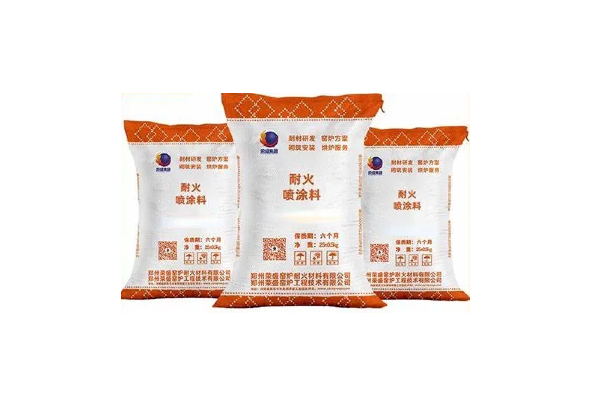Refrakter sprey kaplamanın üç yapım yöntemi
Refractory spray coating is sprayed onto the sprayed surface with a spray gun. The material constructed by spraying is called refractory spray coating. Spraying is carried out by using a spray machine and a spray gun. The refractory spray coating is sprayed onto the sprayed surface through a nozzle with the help of compressed air or mechanical pressure in the pipeline to obtain sufficient pressure and flow rate, forming a solid spray coating.

Spraying method of refractory spray coating
The spraying methods of refractory spray coatings are divided into three categories: wet method, dry method, and flame method.

- Wet spraying. Wet spraying refers to spraying the refractory spray material onto the sprayed surface after adding water or liquid binder. Wet spraying is divided into slurry method, wet method, semi-dry method, and pseudo-dry method. The latter three methods are suitable for spraying furnaces or repairing furnace linings.
The slurry method is to stir the refractory mixture into a slurry before spraying, which is mainly used for hot spraying furnaces: the wet method is to stir the refractory mixture into pumpable mud before spraying; the semi-dry method is to add a small amount of water to the refractory mixture and stir it evenly, and when it is transported to the nozzle, add the remaining water and spray it; the pseudo-dry method is to stir the refractory mixture evenly through a mixer, and then transport it to the nozzle and add water before spraying. - Dry spraying: Dry spraying refers to spraying the mixed refractory spray material directly onto the sprayed surface through a nozzle, which is mainly used for furnace repair.
- Flame spraying. Flame spraying is a process in which the mixed refractory spray material is transported to the nozzle by high-speed oxygen in the pipeline, and then sprayed out together with the combustible gas. The material advances during combustion and is sprayed onto the sprayed surface in a molten state. This method is mainly used for hot spray repair of furnace linings. It does not damage the original furnace lining, the spray layer is easy to sinter and has a long service life.
 Rongsheng Refrakter Fabrikası
Rongsheng Refrakter Fabrikası
WeChat
QR Kodunu wechat ile tarayın